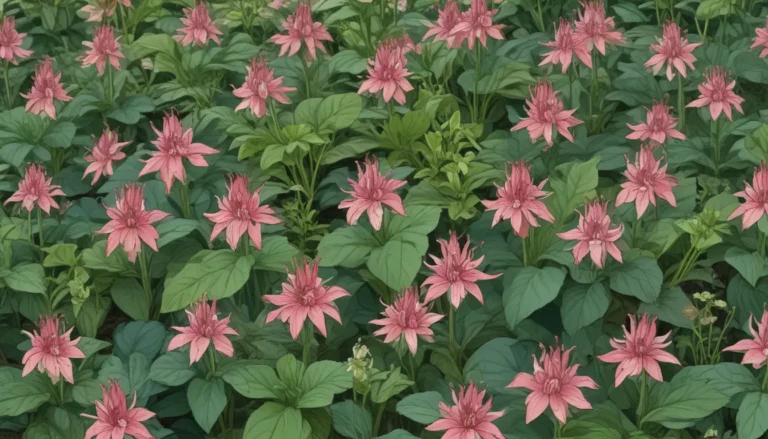A Comprehensive Guide to Growing and Caring for Panicle Hydrangeas

When you think of hydrangeas, your mind may immediately go to the popular Hydrangea macrophylla. However, have you considered the graceful and versatile Panicle Hydrangea, or Hydrangea paniculata, for your garden?
Panicle hydrangeas are a favorite among gardeners residing in colder climates, but they can thrive in a variety of environments. From their cold and heat hardiness to their easy maintenance requirements, panicle hydrangeas are a stunning addition to any garden landscape.
If you’re intrigued by the idea of adding these gorgeous blooms to your outdoor space, read on for a complete guide on how to grow and care for panicle hydrangeas successfully.
Why Choose Panicle Hydrangeas
Panicle hydrangeas offer a multitude of benefits for gardeners, making them a desirable choice for various landscapes. Here are a few reasons why you might consider adding panicle hydrangeas to your garden:
- Cold and heat tolerance: Panicle hydrangeas can withstand fluctuating temperatures, making them suitable for a wide range of climates.
- Versatile soil preferences: These bushes can thrive in a variety of soil conditions, from mildly acidic to slightly alkaline.
- Sun-loving: Panicle hydrangeas prefer sunny spots, making them an excellent choice for gardens with ample sunlight.
- Low maintenance: Once established, panicle hydrangeas are relatively easy to care for, requiring minimal maintenance.
Propagating Panicle Hydrangeas
Panicle hydrangeas are easy to propagate through cuttings or layering. Here’s how you can propagate these beautiful shrubs:
From Cuttings
- Take six- to eight-inch cuttings from a healthy stem in late spring or early summer.
- Remove the leaves from the lower three inches of the cutting.
- Dip the cuttings in rooting hormone powder before planting in a soilless mixture.
- Place the pot in a warm, indirect sunlight location and water when the soil surface is dry.
By Layering
- Choose a healthy branch and bend it to reach the ground.
- Scrape the branch lightly and place it in a shallow trench in the soil.
- Water occasionally and wait for roots to develop before transplanting.
Transplanting
- Dig a hole slightly larger than the transplant pot and plant your rooted cutting.
- Water thoroughly and mulch around the plant to protect the roots.
Growing Tips for Panicle Hydrangeas
To ensure the successful growth of your panicle hydrangeas, follow these essential growing tips:
- Plant in a full sun location to encourage abundant flower clusters.
- Avoid adding compost or other amendments at planting time.
- Water deeply when the soil is dry to three inches down for optimal growth.
Pruning and Maintenance
Panicle hydrangeas bloom on new wood, making them easy to prune. To keep your shrub healthy and shapely, prune it in late fall or early spring. Remember to only prune when the plant is dormant to avoid cutting off new buds.
Cultivars to Consider
There are several delightful panicle hydrangea cultivars to choose from, each offering unique colors and sizes. Here are a few popular cultivars to consider:
- Firelight: Boasting vivid red blooms on strong stems, this variety grows up to eight feet tall.
- Limelight: With lime-toned white blooms that transition to deep pink, this cultivar is hardy in Zones 3 to 9.
- Little Quick Fire: This petite variety features creamy white panicles that turn deep pink in the summer.
Managing Pests and Disease
While panicle hydrangeas are relatively resistant to pests and diseases, it’s essential to keep an eye out for common issues such as aphids, scale, and powdery mildew. Here are a few tips for managing pests and diseases on your panicle hydrangeas:
- Use horticultural oil to control aphids and scale infestations.
- Remove infected leaves and branches to prevent the spread of diseases such as bacterial blight and powdery mildew.
Best Uses for Panicle Hydrangeas
Panicle hydrangeas are incredibly versatile and can be used in various ways in your garden. Whether planted as specimens, in groups, or as borders, these shrubs add a touch of elegance to any landscape.
Quick Reference Growing Guide
- Plant Type: Deciduous, flowering woody shrub
- Flower/Foliage Color: White to pink and red/green
- Hardiness (USDA Zone): 3-9
- Exposure: Full sun to part shade
- Spacing: 6-10 feet
- Height: 8-15 feet
- Spread: 6-12 feet
- Water Needs: Moderate
- Common Pests: Aphids, deer, scale, spider mites
- Common Diseases: Bacterial blight, powdery mildew
Conclusion
With their stunning blooms, easy maintenance, and cold tolerance, panicle hydrangeas are an excellent choice for gardeners looking to add beauty to their outdoor spaces. By following the tips and guidelines provided in this comprehensive guide, you can successfully grow and care for these elegant shrubs in your garden.
Do you have panicle hydrangeas in your garden? Share your experiences with these lovely blooms in the comments below. And for more information on growing hydrangeas, check out our other helpful guides.
References:
– Arbico Organics
– Nature Hills Nursery
Remember, with proper care and attention, your panicle hydrangeas will reward you with a world of color and beauty season after season. Happy gardening!





